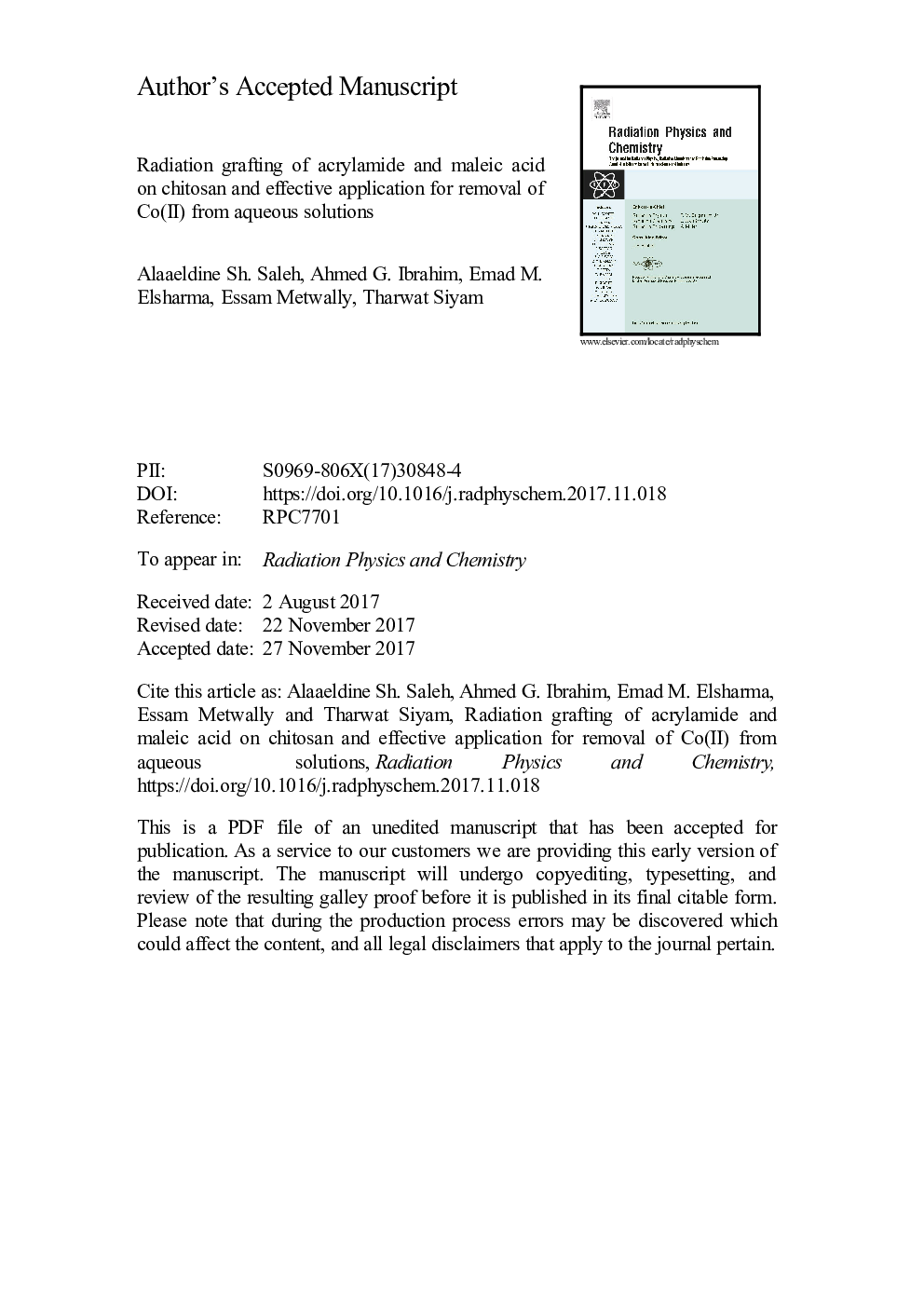| Article ID | Journal | Published Year | Pages | File Type |
|---|---|---|---|---|
| 8251744 | Radiation Physics and Chemistry | 2018 | 37 Pages |
Abstract
The graft copolymerization has been proven as a superior polymerization technique because it combines the functional advantages of the grafted and base polymers. In this work, the radiation-induced grafting of acrylamide (AAm) and maleic acid (MA) onto chitosan (CTS) was developed and optimized by determining the grafting percentage and efficiency as a function of grafting conditions such as AAm, MA, and CTS concentrations, and absorbed dose. Fourier transform infrared spectroscopic analysis (FTIR) confirmed the graft copolymerization. Thermogravimetric analysis (TGA) and differential thermal analysis (DTA) further characterized the grafted copolymers and showed their high thermal stability. Using batch sorption experiments and 60Co as a radiotracer, poly(CTS-AAm) and poly(CTS-MA) were evaluated for Co(II) removal from aqueous solutions. The Co(II) removal increases with increasing time, pH, polymer, and Co(II) concentrations. Experimentally, P(CTS-AAm) and P(CTS-MA) show high sorption capacities of Co(II), i.e. 150 mg g-1 and 421 mg g-1, respectively, which makes them potential sorbents of Co(II) for water and wastewater treatment. Finally, the Co(II) sorption was examined using sorption isotherm and kinetic models. The sorption was best fitted to Langmuir model which suggests the sorption is of chemisorption type. On the other hand, the sorption kinetics was best represented by Elovich model which also indicates the chemical nature of Co(II) sorption on P(CTS-AAm) and P(CTS-MA).
Related Topics
Physical Sciences and Engineering
Physics and Astronomy
Radiation
Authors
Alaaeldine Sh. Saleh, Ahmed G. Ibrahim, Emad M. Elsharma, Essam Metwally, Tharwat Siyam,
